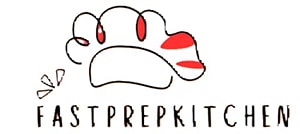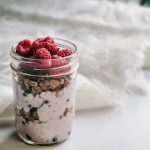The Best Fluffy Pancakes recipe you will fall in love with. Full of tips and tricks to help you make the best pancakes.
A well-balanced breakfast plate is the key to starting your day with energy and focus. Whether you prefer a protein-packed meal, a sweet and savory combo, or a quick grab-and-go option, building the perfect morning spread doesn’t have to be complicated. By including the right mix of protein, healthy fats, and carbohydrates, you can create a breakfast that keeps you full and satisfied for hours.
In this guide, we’ll explore the essential components of a nutritious breakfast plate, easy meal ideas, time-saving tips, and how to customize your meal for different diets. Get ready to transform your mornings with delicious and wholesome breakfast plates!
Why a Balanced Breakfast Plate Matters
A balanced breakfast plate is not just about taste but also about providing the nutrients your body needs to start the day. Research has shown that a nutritious breakfast supports weight management, energy levels, and cognitive function. It helps fuel your body after a long night of fasting, setting the stage for a productive morning. According to a study published on PubMed Central, starting the day with a balanced meal can improve concentration and performance throughout the day (PMC5986439).
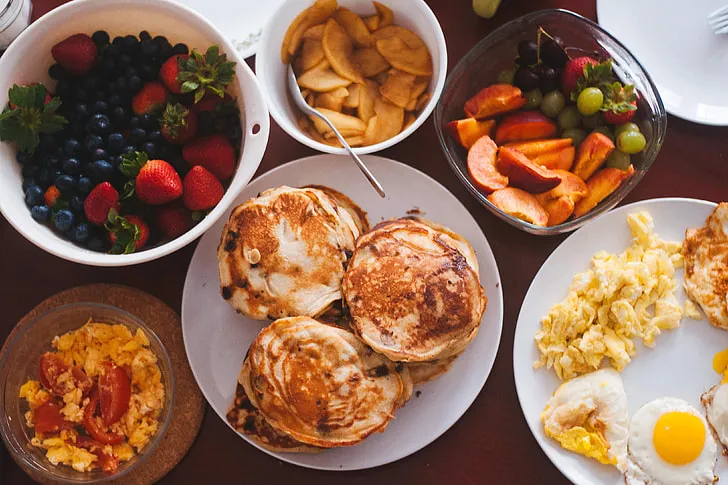
1. The Importance of a Nutritious Breakfast for Energy and Metabolism
After a long night of fasting, your body needs nourishment to replenish its energy stores. Eating a well-rounded breakfast provides the necessary fuel to power through your morning tasks, whether it’s work, school, or a workout. A balanced breakfast stabilizes blood sugar levels, preventing the mid-morning energy crashes that often lead to unhealthy snacking.
Skipping breakfast or choosing an unbalanced meal high in refined sugars can lead to spikes and crashes in blood sugar, making you feel sluggish and unfocused. On the other hand, a breakfast rich in protein, fiber, and healthy fats provides sustained energy and improves concentration.
2. Key Macronutrients: Protein, Healthy Fats, and Carbohydrates
A balanced breakfast plate should include a variety of macronutrients to keep you full and satisfied:
- Protein: Essential for muscle repair, metabolism, and keeping you full longer. Great sources include eggs, Greek yogurt, lean meats, tofu, and cottage cheese.
- Healthy Fats: Supports brain function and keeps hunger at bay. Healthy fats can be found in avocado, nuts, seeds, and olive oil.
- Complex Carbohydrates: Provides long-lasting energy and fiber for digestion. Whole grains like oats, whole wheat toast, and quinoa are excellent choices.
By incorporating these three macronutrients into your breakfast, you create a meal that promotes stable energy, supports overall health, and reduces cravings later in the day.
3. Common Mistakes to Avoid When Building Your Breakfast Plate
Even with the best intentions, it’s easy to make mistakes when assembling your breakfast plate. Here are some common pitfalls to watch out for:
- Relying too much on processed foods: Many breakfast cereals, pastries, and flavored yogurts contain high amounts of added sugars and artificial ingredients that can cause energy crashes.
- Skipping protein: A carbohydrate-heavy breakfast (like just toast or cereal) may leave you hungry within an hour. Adding protein helps sustain your energy and keeps you full longer.
- Not including enough fiber: Fiber aids digestion and prevents blood sugar spikes. Add fruits, vegetables, or whole grains to your breakfast for extra fiber.
- Drinking too much sugary coffee or juice: While a cup of coffee or juice can be refreshing, too much added sugar in flavored coffee drinks or fruit juices can lead to a mid-morning slump. Opt for unsweetened options or pair them with a protein-rich meal.
By understanding the importance of a balanced breakfast and avoiding these common mistakes, you can create a morning meal that supports your overall health and well-being.
Essential Components of a Perfect Breakfast Plate
Building the perfect breakfast plate is all about balance. A well-structured morning meal should provide essential nutrients to fuel your body, keep you full, and support overall health. The key is to combine protein, healthy fats, carbohydrates, and fiber while adding fresh, flavorful ingredients for variety. Let’s break down the essential components of an ideal breakfast plate and how to mix and match them for a delicious and nutritious start to your day.
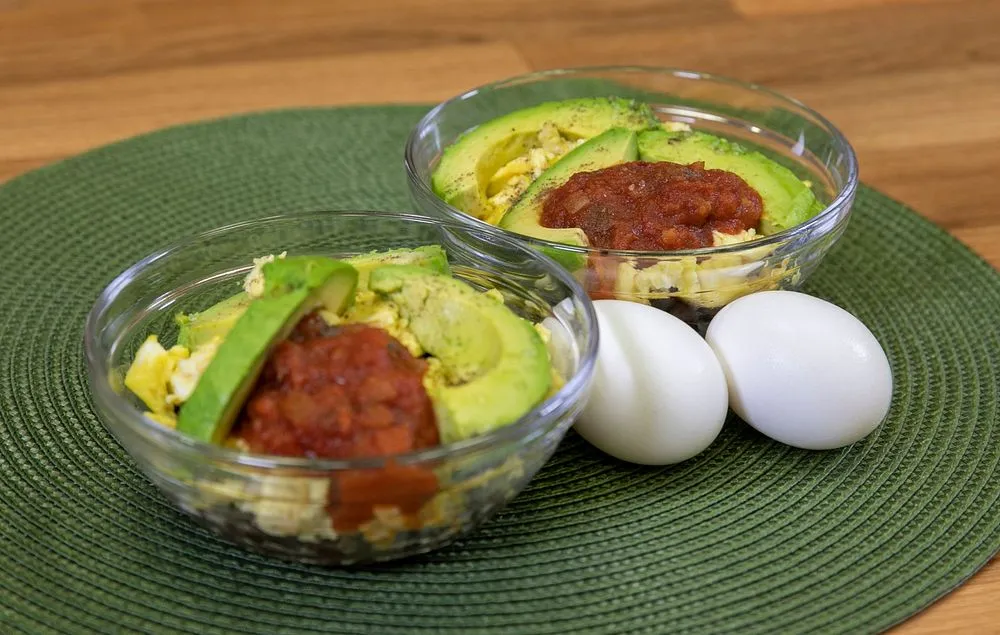
1. Protein: The Foundation of a Filling Breakfast
Protein is a crucial macronutrient that helps repair muscles, support metabolism, and keep you full longer. It slows digestion, preventing mid-morning hunger pangs and energy crashes.
Great Protein Sources for Your Breakfast Plate:
- Eggs – Scrambled, poached, boiled, or in an omelet
- Greek yogurt – Packed with protein and probiotics for gut health
- Cottage cheese – Creamy, filling, and great with fruit or nuts
- Lean meats – Turkey bacon, chicken sausage, or smoked salmon
- Tofu or tempeh – Perfect for plant-based eaters, great in scrambles or stir-fries
- Nut butters – Almond, peanut, or cashew butter spread on whole-grain toast or fruit
A high-protein breakfast helps maintain energy levels and supports muscle recovery, making it a key part of any balanced meal.
2. Healthy Fats: Essential for Brain Function and Satiety
Many people avoid fats, but healthy fats are essential for brain function, hormone balance, and keeping you full and satisfied. Adding the right fats to your breakfast plate ensures a slow, steady release of energy throughout the morning.
Healthy Fat Sources to Include:
- Avocado – Rich in monounsaturated fats and fiber, perfect on toast or eggs
- Nuts and seeds – Almonds, walnuts, chia seeds, and flaxseeds for crunch and nutrition
- Olive oil – Drizzle on eggs or use for cooking
- Coconut – Shredded coconut or coconut milk for a tropical twist
- Cheese – A great fat source in moderation, try feta, goat cheese, or cheddar
By incorporating healthy fats into your breakfast, you enhance flavor and increase the meal’s staying power.
3. Carbohydrates: The Energy Source for a Strong Start
Carbohydrates provide the fuel your body and brain need to function properly. The key is choosing complex carbs that digest slowly and keep blood sugar levels stable, rather than refined carbs that can cause spikes and crashes.
Best Carbohydrates for Your Breakfast Plate:
- Whole-grain toast – A fiber-rich base for nut butter, avocado, or eggs
- Oats – Loaded with fiber and beta-glucan for heart health
- Quinoa – A protein-packed grain perfect for breakfast bowls
- Sweet potatoes – A nutrient-dense alternative to traditional toast
- Brown rice cakes – Light and crispy, great with nut butter or yogurt
Pairing carbs with protein and healthy fats ensures a balanced meal that won’t leave you hungry too soon.
4. Fruits and Vegetables: Boosting Fiber, Vitamins, and Antioxidants
Adding fresh produce to your breakfast plate increases its nutritional value, providing essential vitamins, minerals, and fiber. Fruits add natural sweetness, while vegetables offer a savory, nutrient-dense component.
Best Fruits and Vegetables for Breakfast:
- Berries – Blueberries, strawberries, and raspberries are rich in antioxidants
- Bananas – Great for potassium and a natural source of sweetness
- Spinach or kale – Add to omelets, scrambles, or smoothies for extra nutrients
- Tomatoes – Perfect with eggs or on whole-grain toast
- Bell peppers – Great in omelets or breakfast wraps
Including a mix of fruits and vegetables ensures your breakfast is packed with fiber and essential nutrients.
5. Hydration: Don’t Forget Your Morning Drinks!
While not technically part of a breakfast plate, beverages play a key role in morning nutrition. Staying hydrated is essential for digestion, metabolism, and mental clarity.
Healthy Morning Beverage Options:
- Water – The best way to rehydrate after sleeping
- Coffee or tea – Provides antioxidants and a natural energy boost (opt for minimal sugar)
- Smoothies – A great way to pack in fruits, vegetables, protein, and healthy fats
- Fresh juice – Orange juice, green juice, or carrot juice (choose 100% juice with no added sugars)
Easy and Delicious Breakfast Plate Ideas
Creating a nutritious and delicious breakfast plate doesn’t have to be complicated. Whether you prefer a classic, high-protein, low-carb, or sweet-and-savory combination, there are endless ways to customize your morning meal. The key is to balance protein, healthy fats, and carbohydrates while adding fresh and flavorful ingredients to keep things interesting.
Below are some easy and delicious breakfast plate ideas to suit different tastes and dietary preferences.
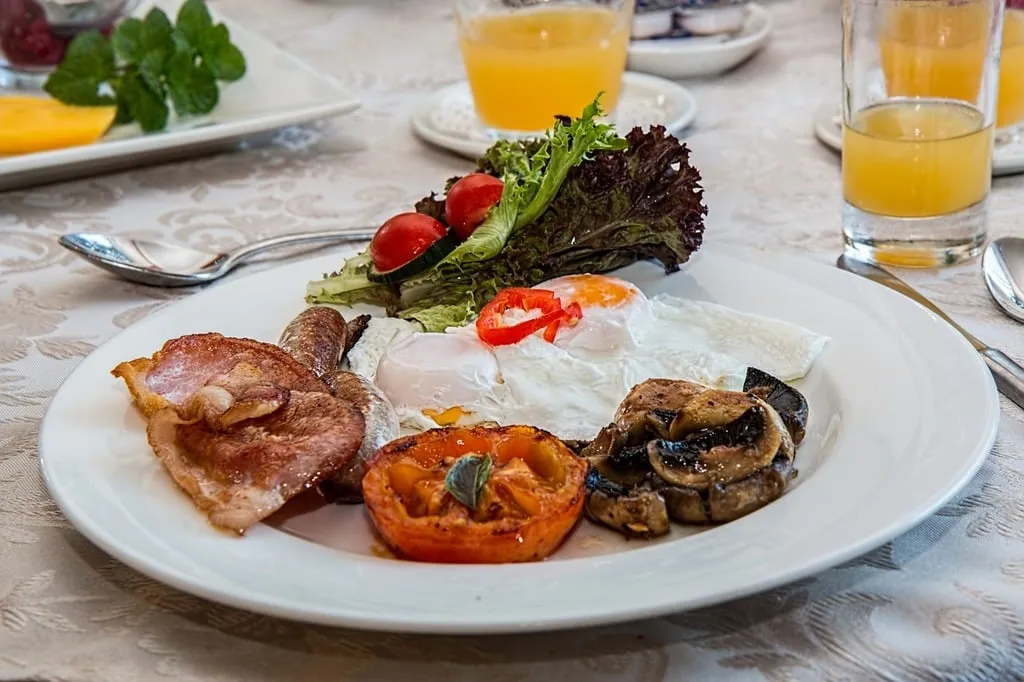
1. Classic Breakfast Combo: A Hearty and Balanced Plate
Ingredients:
- 2 scrambled eggs (or fried eggs)
- 2 slices of whole-grain bread
- 1 tablespoon avocado (optional)
- A handful of mixed berries or 1 sliced banana
- 2 slices turkey bacon or 1 chicken sausage link
- 1 cup black coffee or herbal tea
Directions:
- Scramble or fry the eggs according to your preference. For an extra nutritious option, sauté some spinach or bell peppers in the eggs.
- Toast the whole-grain bread and spread a light layer of butter or avocado.
- Slice the banana or wash the berries and place them on the plate.
- Cook the turkey bacon or chicken sausage on medium heat until crisp.
- Serve with a warm cup of black coffee or tea.
Tip: Sprinkle flaxseeds or chia seeds on the toast for extra fiber and omega-3 fatty acids.
2. High-Protein Breakfast Plate: Stay Full Longer
Ingredients:
- 3 eggs (scrambled or an egg-white omelet)
- ¼ cup feta cheese (optional)
- ¼ cup cottage cheese
- 2 tablespoons sliced almonds
- 1 tablespoon honey
- 2-3 slices smoked salmon
- 1 cup Greek yogurt
- 1 banana
- 1 tablespoon nut butter (almond, peanut, etc.)
Directions:
- Scramble or make an egg-white omelet with spinach and feta cheese.
- Serve the cottage cheese with sliced almonds and a drizzle of honey.
- Top the Greek yogurt with the banana and nut butter, mixing to combine.
- Serve the smoked salmon on whole-grain crackers or rice cakes.
Tip: For a plant-based version, swap the eggs for a tofu scramble and the yogurt for a plant-based alternative.
3. Low-Carb Breakfast Plate: A Keto-Friendly Option
Ingredients:
- 2 scrambled eggs
- 1 avocado, sliced
- 2-3 slices grilled or smoked salmon
- 1 tablespoon cream cheese
- 1 cup sautéed mushrooms and spinach
- A handful of almonds or walnuts
- 1 cup unsweetened black coffee or herbal tea
Directions:
- Scramble the eggs with a pinch of salt and pepper.
- Slice the avocado and place it next to the eggs.
- Grill or smoke the salmon and add a dollop of cream cheese on top.
- Sauté the mushrooms and spinach with olive oil or butter for 5-7 minutes until tender.
- Serve the meal with a handful of almonds or walnuts and a hot cup of herbal tea.
Tip: Add extra cheese to your eggs or a side of crispy bacon for a more satisfying meal.
4. Sweet and Savory Mix: A Balanced and Flavorful Morning Plate
Ingredients:
- 1 cup Greek yogurt
- 2 tablespoons granola
- 1 tablespoon honey
- ¼ cup fresh berries (strawberries, blueberries, etc.)
- 2 scrambled eggs or a mini omelet
- 2 slices whole-grain toast
- 1 tablespoon almond butter
- 1 banana, sliced
- A drizzle of dark chocolate or cinnamon (optional)
Directions:
- Serve the Greek yogurt in a bowl, topping it with granola, honey, and fresh berries.
- Scramble the eggs or make a mini omelet with any vegetables of your choice.
- Toast the whole-grain bread and spread almond butter on top, adding the banana slices.
- Drizzle with dark chocolate or a sprinkle of cinnamon for extra flavor.
Tip: Swap the yogurt for chia pudding or oatmeal to make it fiber-rich and customizable.
5. Quick & On-the-Go Breakfast Plate: For Busy Mornings
Ingredients:
- 2 hard-boiled eggs (meal-prep in advance)
- A handful of mixed nuts and dried fruit
- 1 slice whole-wheat toast or 1 banana with peanut butter
- 1 pre-made smoothie pack (protein powder, spinach, almond milk)
Directions:
- Hard-boil eggs in advance and store them in the fridge for easy access.
- Assemble a handful of mixed nuts (almonds, walnuts, cashews) and some dried fruit (raisins, cranberries, etc.).
- Toast the whole-wheat bread or slice the banana and spread with peanut butter.
- Prepare a smoothie using a pre-made pack, blending it with almond milk or water.
Tip: Prepare smoothie packs in the freezer ahead of time with protein powder, spinach, and frozen fruits so they’re ready to go when needed.
If you’re looking for a fun and customizable way to start your morning, try adding yogurt bowls to your breakfast plate. These bowls are easy to make and can be packed with protein, fiber, and antioxidants. For inspiration, check out these amazing yogurt breakfast bowl recipes.
Quick Tips for a Time-Saving Morning Meal
Mornings can be hectic, and preparing a nutritious breakfast often takes a back seat when you’re rushing to start your day. However, with a few smart strategies, you can enjoy a balanced and delicious breakfast without spending too much time in the kitchen. Below are some practical tips to help you streamline your morning routine while still enjoying a well-prepared breakfast plate.
1. Meal Prep Ideas for Busy Mornings
One of the best ways to save time in the morning is to prepare your breakfast ingredients or meals in advance. Here are a few easy meal-prep strategies:
- Make-ahead egg muffins – Whisk eggs with vegetables, cheese, and protein (like turkey or tofu), pour into a muffin tin, and bake. Store in the fridge for a grab-and-go breakfast.
- Overnight oats – Mix rolled oats with milk (or yogurt), chia seeds, and your favorite toppings, then refrigerate overnight for a ready-to-eat meal.
- Pre-cut fruits and veggies – Slice berries, bananas, cucumbers, or bell peppers in advance for quick assembly in the morning.
- Batch-cook proteins – Prepare hard-boiled eggs, turkey bacon, or tofu scrambles in bulk and store them for easy access throughout the week.
- Make smoothie packs – Pre-portion ingredients like spinach, frozen fruits, and protein powder in freezer bags; just blend with milk or yogurt in the morning.
Tip: Set aside 30 minutes on Sundays to prepare breakfast essentials for the week.
2. How to Mix and Match Ingredients for Variety
Eating the same breakfast every day can get boring, but switching things up doesn’t have to be time-consuming. By keeping a few staple ingredients on hand, you can mix and match them to create different meals throughout the week.
Breakfast Ingredient Staples:
- Protein: Eggs, Greek yogurt, tofu, cottage cheese, nut butters
- Carbohydrates: Whole-grain bread, oatmeal, rice cakes, sweet potatoes
- Healthy fats: Avocado, nuts, seeds, olive oil
- Fruits & veggies: Berries, bananas, spinach, tomatoes, bell peppers
Quick Mix-and-Match Ideas:
- Day 1: Scrambled eggs + whole-wheat toast + avocado
- Day 2: Greek yogurt + granola + berries
- Day 3: Hard-boiled eggs + rice cakes + peanut butter + banana slices
- Day 4: Cottage cheese + nuts + honey + sliced apple
- Day 5: Overnight oats with chia seeds + almond butter + strawberries
Tip: Store breakfast ingredients in easy-to-access containers so you can quickly assemble your meal.
3. Using Leftovers Creatively for Breakfast
Dinner leftovers can be repurposed into quick and delicious breakfast plates. This is a great way to save time while reducing food waste.
Ways to Turn Leftovers into Breakfast:
- Roasted veggies → Add them to scrambled eggs or omelets.
- Cooked quinoa or rice → Mix with nuts, milk, and cinnamon for a warm breakfast bowl.
- Grilled chicken or steak → Slice and add to avocado toast or a breakfast wrap.
- Baked potatoes or sweet potatoes → Mash and top with cottage cheese and honey.
- Leftover salad greens → Pair with eggs and toast for a fresh breakfast plate.
Tip: Store leftovers in small, portioned containers to make them easier to use in the morning.
4. Kitchen Tools That Make Breakfast Easier
Investing in the right kitchen tools can significantly cut down prep time and help you whip up breakfast effortlessly.
Time-Saving Kitchen Gadgets:
- Blender – For quick smoothies, protein shakes, or pancake batter.
- Egg cooker – Cooks hard-boiled eggs in minutes without monitoring.
- Air fryer – Perfect for crisping bacon, reheating toast, or roasting vegetables quickly.
- Mason jars – Ideal for overnight oats or parfaits.
- Meal-prep containers – Keep ingredients organized for easy assembly.
Tip: Keep commonly used utensils (like a knife, cutting board, and measuring spoons) within reach to speed up prep time.
Customizing Your Breakfast Plate for Different Diets
Everyone has unique dietary preferences and nutritional needs, which means that the perfect breakfast plate looks different for each person. Whether you’re following a plant-based, low-carb, high-protein, or gluten-free diet, you can still enjoy a delicious and balanced morning meal tailored to your lifestyle. Below, we explore how to customize your breakfast plate based on different dietary approaches.
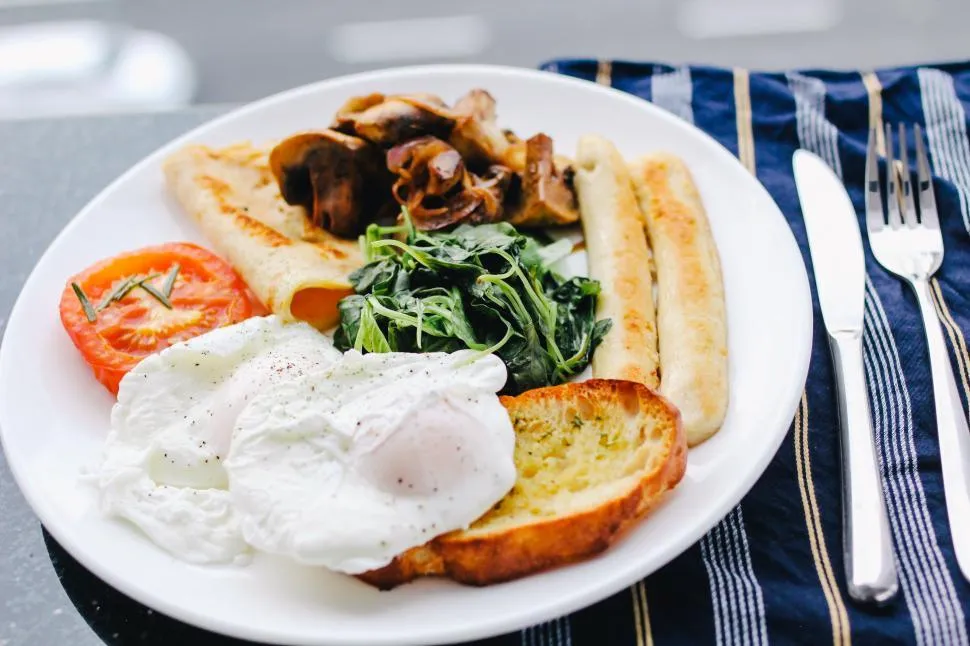
1. Plant-Based Breakfast Plate (Vegetarian & Vegan-Friendly)
For those who follow a vegetarian or vegan diet, the focus is on whole plant-based ingredients that provide enough protein, fiber, and healthy fats to keep you full.
Plant-Based Protein Sources:
- Tofu or tempeh scrambles – A great alternative to scrambled eggs, seasoned with turmeric and nutritional yeast.
- Chia seed pudding – Made with plant-based milk and topped with nuts and berries.
- Nut butters and seeds – Almond butter, peanut butter, hemp seeds, and pumpkin seeds for added protein and healthy fats.
- Legumes – Chickpeas, black beans, or lentils, perfect for a savory breakfast plate.
Balanced Plant-Based Breakfast Ideas:
- Avocado toast on whole-grain bread with hemp seeds and cherry tomatoes.
- Smoothie bowl with almond milk, frozen berries, spinach, chia seeds, and granola.
- Oatmeal topped with walnuts, flaxseeds, and a drizzle of maple syrup.
- Vegan pancakes made with oat flour and flax eggs, served with nut butter and bananas.
Tip: Ensure you get enough protein by including plant-based yogurts, seeds, nuts, and legumes in your breakfast.
2. Low-Carb & Keto Breakfast Plate (For Weight Loss & Blood Sugar Control)
For those following a low-carb or ketogenic diet, the goal is to reduce carbohydrate intake while increasing healthy fats and moderate protein. This helps maintain steady blood sugar levels and supports fat burning.
Low-Carb & Keto-Friendly Foods:
- Eggs – Poached, scrambled, or fried in olive oil or butter.
- Avocado – A great source of monounsaturated fats to keep you full.
- Cheese – Full-fat cheese like cheddar, feta, or goat cheese.
- Nuts & seeds – Almonds, macadamia nuts, chia seeds, and flaxseeds for added crunch.
- Leafy greens – Spinach, kale, or arugula as a fiber-rich side.
Low-Carb & Keto Breakfast Ideas:
- Omelet with cheese, spinach, and mushrooms (served with a side of avocado).
- Greek yogurt with crushed walnuts, chia seeds, and a drizzle of almond butter.
- Smoked salmon and avocado slices on a plate with cream cheese and olives.
- Egg muffins with bacon, cheese, and green peppers for a meal-prep-friendly breakfast.
Tip: Avoid high-sugar fruits, bread, and grains; instead, focus on healthy fats and protein to stay in ketosis.
3. High-Protein Breakfast Plate (For Muscle Building & Satiety)
A high-protein breakfast is great for muscle growth, metabolism, and staying full for longer. It’s ideal for athletes, fitness enthusiasts, or anyone looking to prevent mid-morning hunger.
High-Protein Food Sources:
- Eggs – One of the best natural protein sources.
- Greek yogurt & cottage cheese – Packed with protein and probiotics.
- Lean meats – Turkey bacon, grilled chicken, smoked salmon.
- Protein smoothies – Made with whey or plant-based protein powder.
- Legumes & lentils – A plant-based protein source for a heartier meal.
High-Protein Breakfast Ideas:
- Scrambled eggs with turkey sausage and sautéed spinach.
- Cottage cheese with sliced almonds and fresh strawberries.
- Whole-grain toast with smoked salmon, cream cheese, and capers.
- Protein pancakes made with eggs, protein powder, and banana.
Tip: Add protein to every meal by incorporating nuts, dairy, lean meats, or legumes.
4. Gluten-Free Breakfast Plate (For Gluten Sensitivities & Celiac Disease)
For those with gluten intolerance or celiac disease, a gluten-free breakfast plate should include naturally gluten-free grains, proteins, and healthy fats.
Gluten-Free Carbohydrate Alternatives:
- Gluten-free oats – A fiber-rich choice for a warm breakfast.
- Rice cakes & quinoa – Great substitutes for traditional bread.
- Sweet potatoes – A nutrient-dense and filling option.
- Almond & coconut flour – Used in pancakes or baked goods.
Gluten-Free Breakfast Ideas:
- Quinoa porridge with almond milk, berries, and nuts.
- Scrambled eggs with avocado and a side of roasted sweet potatoes.
- Chia pudding with coconut milk and a sprinkle of cinnamon.
- Gluten-free toast with peanut butter and banana slices.
Tip: Check food labels for hidden gluten in processed breakfast items like cereals, granola, and yogurt.
5. Mediterranean Breakfast Plate (For Heart Health & Longevity)
The Mediterranean diet emphasizes whole foods, healthy fats, lean proteins, and fresh fruits and vegetables, making it a great option for a heart-healthy breakfast.
Key Mediterranean Breakfast Ingredients:
- Olive oil – Used for cooking or drizzled over toast and eggs.
- Greek yogurt – High in protein and probiotics.
- Nuts & seeds – Almonds, walnuts, and flaxseeds for healthy fats.
- Fresh fruits & vegetables – Tomatoes, cucumbers, and berries.
- Whole grains – Whole-grain bread, oats, and barley.
Mediterranean Breakfast Ideas:
- Greek yogurt with honey, walnuts, and pomegranate seeds.
- Omelet with feta cheese, olives, and fresh tomatoes.
- Avocado toast on whole-grain bread with a drizzle of olive oil.
- Fresh fruit bowl with a handful of almonds and a side of cheese.
Tip: Use olive oil instead of butter and incorporate herbs like basil, oregano, and parsley for added flavor.
